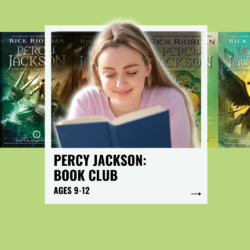Description
Unlock the magic of literature and embark on an enriching learning journey with our comprehensive Language Arts course!
In this semester’s English language arts program, students will not only explore major literary themes through captivating novels, poems, short stories, and informational texts but also master the essential writing standards. We aim to ignite a love for reading while fostering crucial language skills, critical thinking, and effective communication. Throughout the course, students will build a strong foundation in grammar and writing, learning to express themselves with clarity and artistry. They will engage in close reading and thoughtful analysis, honing their ability to decipher figurative language in poems and unravel the significance of themes in short stories. In lively classroom discussions, they will develop the confidence to express their insights and interpretations effectively. With weekly writing assignments, including essays, poems, narratives, and more, students will learn to craft well-organized and compelling pieces that showcase their critical thinking skills. Join us in discovering the boundless joys of literature, learning, and community!
COURSE SYLLABUS
Our carefully curated selection of GREAT BOOKS, ranging from timeless classics to lesser-known gems, promises to kindle a love for reading and a deeper understanding of the human experience from a biblical worldview illustrated in the literature. Our focus on beauty, be it in the author’s craft, theme, or setting, ensures an enriching experience that fosters cognitive connections and a broadened background knowledge, critical for growing as a learner, reader, and thinker.
What are the 8 themes? I’m glad you asked. Here are the theme topics along with our novels:
FALL SEMESTER (this class):
Society & Class–The Outsiders by S.E. Hinton
Coming of Age–Where the Red Fern Grows by Wilson Rawls
Friendship & Community: Maniac Magee by Jerry Spinelli
Courage–Shadow of a Bull by Maia Wojciechowska
**If you take semester B…
WINTER SEMESTER
Friendship & Fate–Holes by Louis Sachar
Family & Nature–Miracles on Maple Hill by Virginia Sorensen
Survival & Love–The Cay by Theodore Taylor
Perseverance & Grit–Carry On, Mr. Bowditch by Jean Lee Latham
A Snapshot of Each Class:
- We begin with writing–sentence construction work so students learn to write correctly, succinctly, and artfully.
- Next, we read a piece of literature. Sometimes we will read a part of our novel together; other times, we will read a short story, poem, or piece of informational text.
- Students discuss the literature with their classmates and teacher to determine how the author developed the theme. This is where the teacher intentionally integrates teaching about how to analyze literature. For example, they learn to look for figurative language while taking apart a poem. Or they learn the significance of the setting when analyzing a short story. In this part of the class, students are closely reading, analyzing, thinking, and speaking.
- The teacher goes over the weekly piece of writing. These short pieces can be completed with 30 minutes of homework on top of their weekly reading. The teacher offers graphic organizers and direct teaching on how to do the critical thinking required to formulate an organized and effective short piece of writing.
- Finally, students can show their learning independently in their homework assignments.
The Way We Roll:
Student Motivation & Accountability–Learners participate in interactive lessons during their homework time, which includes quizzes on their reading. We use “workshop time” in class so students will write while the teacher “visits” them on their Google Document. Once we started using this method, we saw nearly a 100% completion rate in student writing! We implement other measures to hold them accountable for their learning, like asking them to verbally give answers if they stop using the chatbox, or telling them to send an “IDK yet” (I don’t know yet) in the chatbox if they can’t yet answer a question. We want to honor the investment parents make in this class and the time students spend. The goal is to build skills and learn! That means students are working, thinking, and writing. Active engagement is the key to success in this class.
Public Speaking & Cameras–The instructor intentionally teaches communication skills and norms. For example, the “dominator” will learn to give others a chance to speak and will even learn to involve others to help bring forth their ideas. The quieter students learn to take risks and put themselves out there because they have good ideas and important things to say. These skills are taught through various methods, including speeches, presentations, and Socratic seminars, which often become the favorite for students. We also talk about how an online community is established, and students are encouraged–but not forced–to keep their cameras open. This helps all students feel connected to each other as a community of learners. It also helps the teacher picture their faces when reading their writing. They naturally get more attention from their teacher when their camera is on because the teacher’s eyes are drawn to faces, not empty black boxes. In fact, students who don’t have their cameras on are sorted last in the list of students and sometimes, Zoom even hides them! Keeping the camera on is a learning strategy and improves engagement. Also, we feel closer to each other when we see each other. Trust us. ?
Homework–Students can expect to have homework after each live class. They will work 15-45 minutes, depending on the assignment and how quickly they work. Students will read for 100 minutes a week (not in addition to our class novels). We want them to fall in love with books! Teachers give authentic and constructive feedback on students’ work that helps them correct their mistakes and fine-tune their skills. Students study grammar through daily mini-lessons and practice sentence writing and using various sentence starters. Students will read for 100 minutes a week. We want them to fall in love with books!
Graphic Organizers–Students need graphic organizers to help them see the structure of a paragraph or essay and the writing process. We also use them to guide their reading of a class novel. This is how they learn to develop coherent ideas. They don’t figure out how to do this magically; the graphic organizers and the intentional, explicit teaching help them learn the skills!
Student Mastery–Each class includes explicit, direct instruction with teacher modeling. Students are guided toward mastery of multiple writing skills and understandings so that they grasp the concepts and become independent. Students are held to a high standard of academic writing, including the use of grammar and the construction of sophisticated sentences.
Teacher Feedback–The back-and-forth work between a student and teacher significantly benefits a student if it is done well. We follow best practices in this area with how we design class time, assignments, and routines. According to Pennington Publishing, effective writing feedback (or grading) is:
• Specific, not general
• Immediate, not postponed
• Routine with a revision / feedback cycle
• Explanatory
• The right amount
• Targeted to the most critical issues
• Varied (written, audio, and video comments)
• Holding students accountable
YOUR TEACHER:
Nervous about the commitment to an entire semester? We offer a little taste in a reading comprehension class. If you take that class, we will provide a coupon for a semester ELA class worth the enrollment fee of the reading class, essentially getting the one-time class for free.
Ages 11-12
Ages 13-14
Get to know Mrs. Lemons and The Lemons-Aid Team.
GRADES:
We give specific and authentic feedback on student writing through the teacher tab of the classroom and on Google Docs. We also give feedback orally and with the chatbox immediately in class. If you require formal grades, please ask at the beginning of the semester.






Reviews
There are no reviews yet.